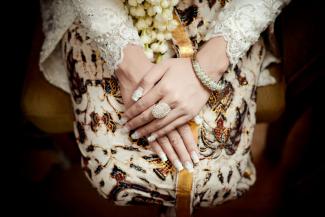
As the year drew to a close in 2024, Chang Hwee Nee, CEO of the National Heritage Board (NHB), had just briefed her superiors at the Ministry of Culture, Community and Youth (MCCY) about an exciting development. Singapore, together with Brunei Darussalam, Indonesia, Malaysia, and Thailand, had succeeded in getting the kebaya (a light but elaborately detailed tunic worn by women in Southeast Asia) inscribed on the UNESCO Representative List of the Intangible Cultural Heritage (ICH) of Humanity.
ICH is defined as the practices, representations, expressions, knowledge, and skills – as well as the instruments, objects, artefacts, and cultural spaces, associated therewith – that communities, groups, and in some cases, individuals recognise as part of their cultural heritage. As of December 2024, some 788 cultural practices in 150 countries had been inscribed on the list. The kebaya’s inscription on the Representative List would offer the garment greater visibility, therefore giving the cultural heritage of the region a boost.
This was not Singapore’s first successful UNESCO ICH inscription. The first, achieved in 2020 for its hawker culture, rallied Singaporeans together during the pandemic as they collectively supported the nomination. In contrast, the subsequent kebaya bid was a cross-border effort that strengthened regional ties. Both successful nominations demonstrate how heritage can foster pride, unity and social cohesion.
These efforts to get elements of Singapore’s cultural heritage inscribed were led by NHB, which manages Singapore’s national museums and heritage institutions, safeguards the country’s heritage sites and monuments, and implemented the 2003 UNESCO Convention for the Safeguarding of ICH. Critically, NHB has helped to raise awareness of the region’s living heritage and generate economic opportunities for heritage-based businesses. The inscription efforts also underscore NHB’s key role in safeguarding Singapore’s legacy for education, nation-building, and cultural understanding.
Lessons from Singapore’s first UNESCO nomination bid
Singapore’s hawker culture nomination to UNESCO was a massive national effort. The National Heritage Board (NHB) led extensive outreach - gathering over 850,000 pledges, staging exhibitions, and organising consent drives to rally support from hawkers and the public alike. The movement fostered national pride, popularised the term ‘hawker culture’, and demonstrated the significance of hawker centres as communal spaces. Educational campaigns and visible reminders, such as commemorative stickers, continue to keep this living heritage alive.
Still, the nomination had its challenges. Some Malaysians criticised the move, percieving it as a claim of ownership; while at home, many locals initially equated hawker culture only with food, rather than the intangible heritage of shared dining and community practices. NHB Heritage Policy & Research Director Melissa Tan elaborated, “Hawker centres are community dining rooms, so we need to bear in mind the social aspect as well. If, one day, there’s only a fully takeaway service at hawker centres and nobody’s sitting there to enjoy a meal with family and friends, I’d say from NHB’s perspective, we’d have lost something.”
Indeed, the perception of hawker culture has changed since the nomination was approved. Said NHB Senior Assistant Director (Heritage Policy & Research) Bernadette Yew, “There’s a sense of pride when we speak to the hawker representatives. To make the successful bid even more visible to everyone, NHB produced a sticker highlighting the inscription, which was given out to all the hawkers.”
Closer ties through cultural diplomacy
The path to UNESCO recognition for the kebaya was very different from Singapore’s earlier nomination of hawker culture. The kebaya bid was a joint nomination by five ASEAN countries, making it the largest of its kind in the region. Malaysia led the submission to UNESCO on behalf of the group, with the dossier entitled ‘Kebaya: Knowledge, Skills, Traditions, and Practices’.
Across the region, the communities of the five nations came together to gather support for the nomination bid. In Indonesia, the kebaya-wearing communities launched the Kebaya Goes to UNESCO campaign to garner public support, while roadshows were staged in Malaysia to engage local communities. In Thailand, the Chinpracha House and Museum showcased in an exhibit how the kebaya had evolved over time; while in Singapore, a social media campaign encouraged the public to share personal stories and photographs of their kebayas using the hashtag #WeHeartKebaya — turning a regional effort into a shared celebration of heritage, identity, and connection
To demonstrate that the kebaya is part of a living heritage, the multi-national bid highlighted elements such as education, skills transfer, and cultural promotion rather than the garment alone, with initiatives including kebaya-making workshops, school programmes, and social media campaigns (#WeHeartKebaya).
Insights gleaned along the way
NHB has had to navigate the complexities of multi-state bids while leveraging a broader range of resources for these joint nominations.
The effort had been illuminating, showing Tan that the ‘whole is greater than the sum of its parts’. As only one form could be submitted, she said, “The five countries had to come together to put in our best efforts to showcase the kebaya… as a package, [and their] contributions resulted in a very strong nomination.”
This case study showed how, by involving its neighbours in its UNESCO nomination bids, Singapore has much to gain in building closer ties and deepening its cultural understanding.
A new joint bid with Malaysia to inscribe the Chingay parade has followed the kebaya bid, reflecting a growing focus on shared traditions as a bridge between both nations. This will enhance and deepen ties between professionals who work in multidisciplinary settings involving elements of heritage, international relations, and cultural geography for both Malaysia and Singapore.
To learn more about Singapore’s hawker culture and kebaya UNESCO inscription bids, please refer to the case study ‘Heritage as a Bridge: Singapore’s Journey for UNESCO Inscription Bids and Regional Collaboration’ by Professor Orlando Woods, Assistant Professor Aidan Wong and Thomas Lim at the Singapore Management University. To read it in full, please visit the CCX website by clicking here.